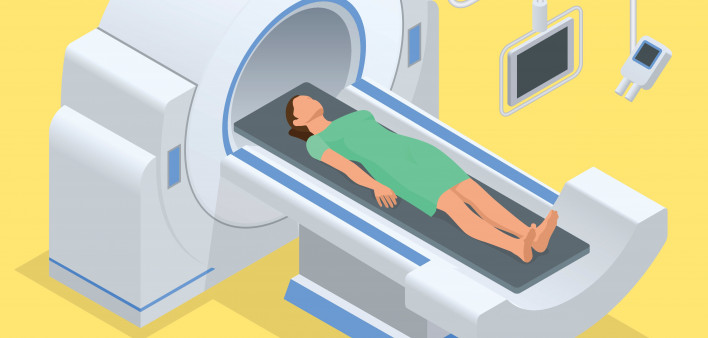Researchers have developed a new, safer, more sensitive MRI dye for diagnosing liver disease in its early stages. If more advanced testing of the dye goes well and it is approved by the Food and Drug Administration, it could become a new noninvasive method for detecting such disease, a much-needed alternative to invasive surgical biopsies.
The research team, which published its findings in Nature Communications, was led by Jenny Yang, a regents’ professor in chemistry at Georgia State University and the associate director of the university’s Center for Diagnostics and Therapeutics. The investigation was supported by the National Institute on Alcohol Abuse and Alcoholism (NIAAA), which is a division of the National Institutes of Health, as well as by Yang’s start-up company, InLighta BioSciences. Investigators at Emory University also contributed.
Known as contrast agents, the dyes employed in MRI exams enhance the visibility of structures inside the body. Yang and her colleagues have patented a new agent known as ProCA32.collagen1 that targets excessive expression of collagen during liver disease and tightly binds with the contrast metal gadolinium. Collagen is a major component of the scar tissue that builds up in liver fibrosis and its more advanced stage, cirrhosis.
Research in animals indicated that the new contrast agent can detect the early stage of liver fibrosis caused by alcohol use as well as non-alcoholic fatty liver disease (NAFLD), which in its most severe form is known as non-alcoholic steatohepatitis (NASH). It can also detect changes in tissue structure and blood flow that can occur in people with liver disease.
ProCA32.collagen1 also boasts twice the accuracy as other contrast agents at detecting tumors in tissue samples from people with hepatocellular carcinoma (HCC, the most common form of liver cancer). It has the ability to detect tumors that are just 0.1 to 0.2 milligrams in diameter, which is 100 times smaller than the lower limit of detectability for conventional contrast agents.
The agent also requires a much lower dose, lowering the risk of metal toxicity.
“It’s a revolutionary change for the field as the first robust detection of the early stage of liver fibrosis,” Yang said in a press release. “This would help doctors monitor treatment before it is irreversible and help pharmaceutical companies to select the right patients for clinical trials or identify subjects for drug discovery.”
To read an NIAAA press release about the study, click here.
To read a Georgia State press release about the study, click here.
To read the study, click here.







Comments
Comments